
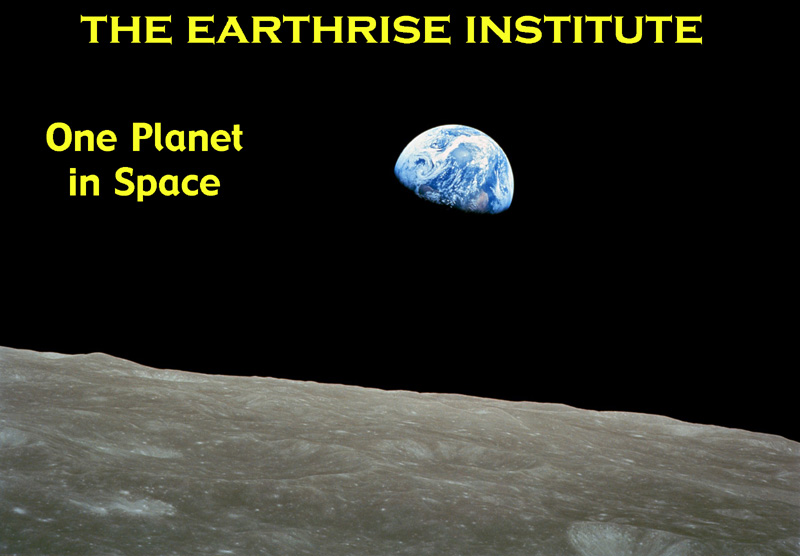
WEEK 41: OCTOBER 4-10
TOPIC: 2008 TC3 AND THE ALMAHATA SITTA METEORITE
The “Special Topics” presentation three weeks ago discussed actions that we might take should we detect an asteroid that appears will impact Earth. The first and foremost task is the collection of as much data as possible in order to refine the orbit and the likelihood of an actual impact, and if this continues to indicate that an impact is definite (or, at the very least, likely) then the discussion turns to what actions can be taken to eliminate or mitigate the threat posed by the object in question. For small objects that may not be discovered until they are already on their final impact trajectory there may not be much that can be done as far as eliminating the threat is concerned, however the data-gathering process can at least identify the “when” and “where” of an impact so that appropriate actions can then be taken to minimize destruction and loss of life.
The world’s astronomers had the unexpected opportunity to test this process in October 2008 with the discovery of the asteroid 2008 TC3, the first time an impacting asteroid was detected while still in space. With an approximate diameter of only four meters 2008 TC3 did not pose any significant impact threat and in fact, as expected, it exploded and broke apart when it entered Earth’s atmosphere, but the opportunity to see how the overall process would work in “real time” helped enormously in seeing how the procedures we have now work and in stimulating improvements to those procedures in case a more serious threat presents itself in the future.
Richard Kowalski with the Mt. Lemmon Survey in Arizona discovered 2008 TC3 on October 6, 2008, with the discovery image being taken at 6:40 UT (11:40 P.M. local time October 5). The object was about 19th magnitude at the time, and images taken over the next hour were enough to show that it was likely located near Earth, and the IAU’s Minor Planet Center shortly thereafter placed it on its Near-Earth Object Confirmation Page, making other observers around the world aware of its presence. Several astrometric observations, mostly from Australia, obtained over the next few hours were enough to provide a valid orbit, and the MPC announced the discovery at 14:59 UT. This first published orbit was already enough to indicate that 2008 TC3 would be impacting Earth – although not surviving passage through the atmosphere – at 2:46 UT October 7, i.e., twenty hours after its initial discovery, and that the impact point would be over northern Sudan.
Over the next eleven hours the MPC issued two dozen orbital updates as additional observations flowed in, primarily from observers in Europe. The last observations were obtained around 1:45 UT, by which time 2008 TC3 had brightened to 13th magnitude, however shortly thereafter it entered Earth’s shadow and was lost from view.
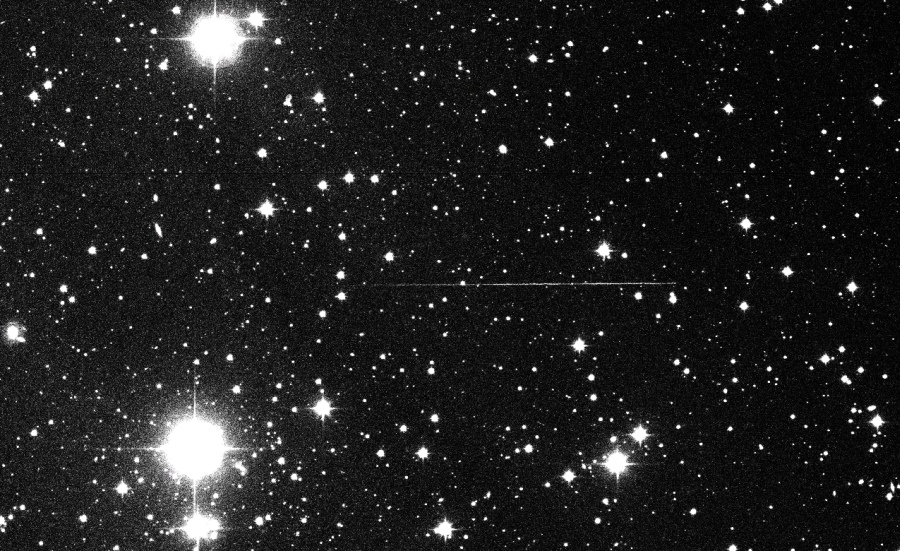
 LEFT: Trailed image of 2008 TC3 entering the earth’s shadow at 1:45 UT on October 7, 2008, taken by the La Sagra Sky Survey in Spain. Courtesy La Sagra Sky Survey. RIGHT: The persistent “train” left by the passage of 2008 TC3 through the atmosphere above northern Sudan, October 7, 2008. Courtesy Mohamed Elhassan Abdelatif Mahir/Muawia Shaddad/Peter Jenniskens.
LEFT: Trailed image of 2008 TC3 entering the earth’s shadow at 1:45 UT on October 7, 2008, taken by the La Sagra Sky Survey in Spain. Courtesy La Sagra Sky Survey. RIGHT: The persistent “train” left by the passage of 2008 TC3 through the atmosphere above northern Sudan, October 7, 2008. Courtesy Mohamed Elhassan Abdelatif Mahir/Muawia Shaddad/Peter Jenniskens.
As predicted, 2008 TC3 entered the atmosphere as a bright meteor over northern Sudan at 2:46 UT – 5:46 A.M. local time – and exploded approximately 37 km above the ground. Eyewitness accounts, some from hundreds of km away, report it as being a brilliant fireball, and it left a long-lasting train of debris and ionized air in the dawn sky. The European weather satellite Meteosat 8 in geostationary orbit over the region recorded it as a bright flash as it disintegrated.
There was hope that some meteorite fragments from the 2008 TC3 atmospheric impact might have reached the ground, and in early December a coordinated research effort led by Peter Jenniskens from the SETI Institute in California and Muawia Shaddad at the University of Khartoum, and involving several students and staff from that University, began scouring the barren Nubian Desert in search for them. Within three days the team had collected 15 fragments, and overall some 600 fragments with a total combined mass of 10.5 kg have now been collected. The meteorite fragments have collectively been named the Almahata Sitta meteorite, that name (which translates as “Station Six” in Arabic) referring to a train station in northern Sudan.
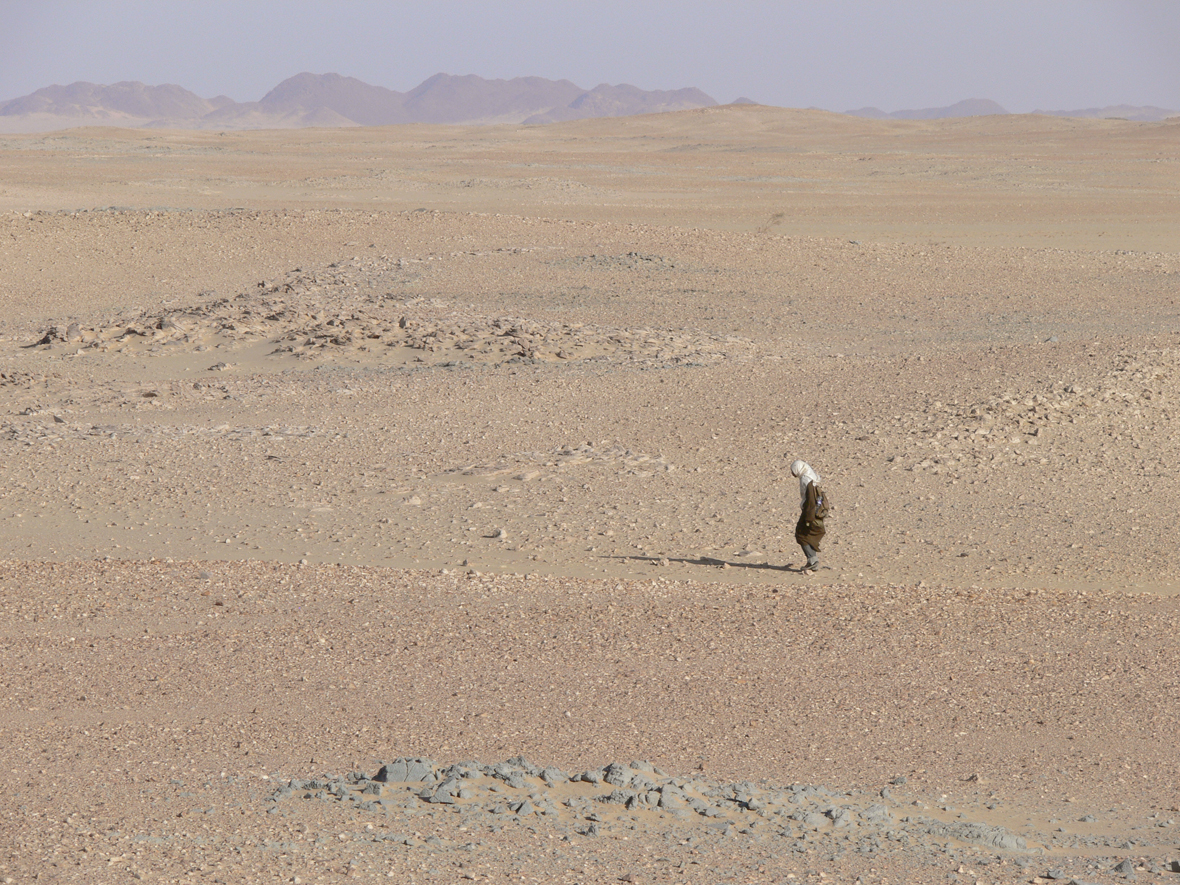
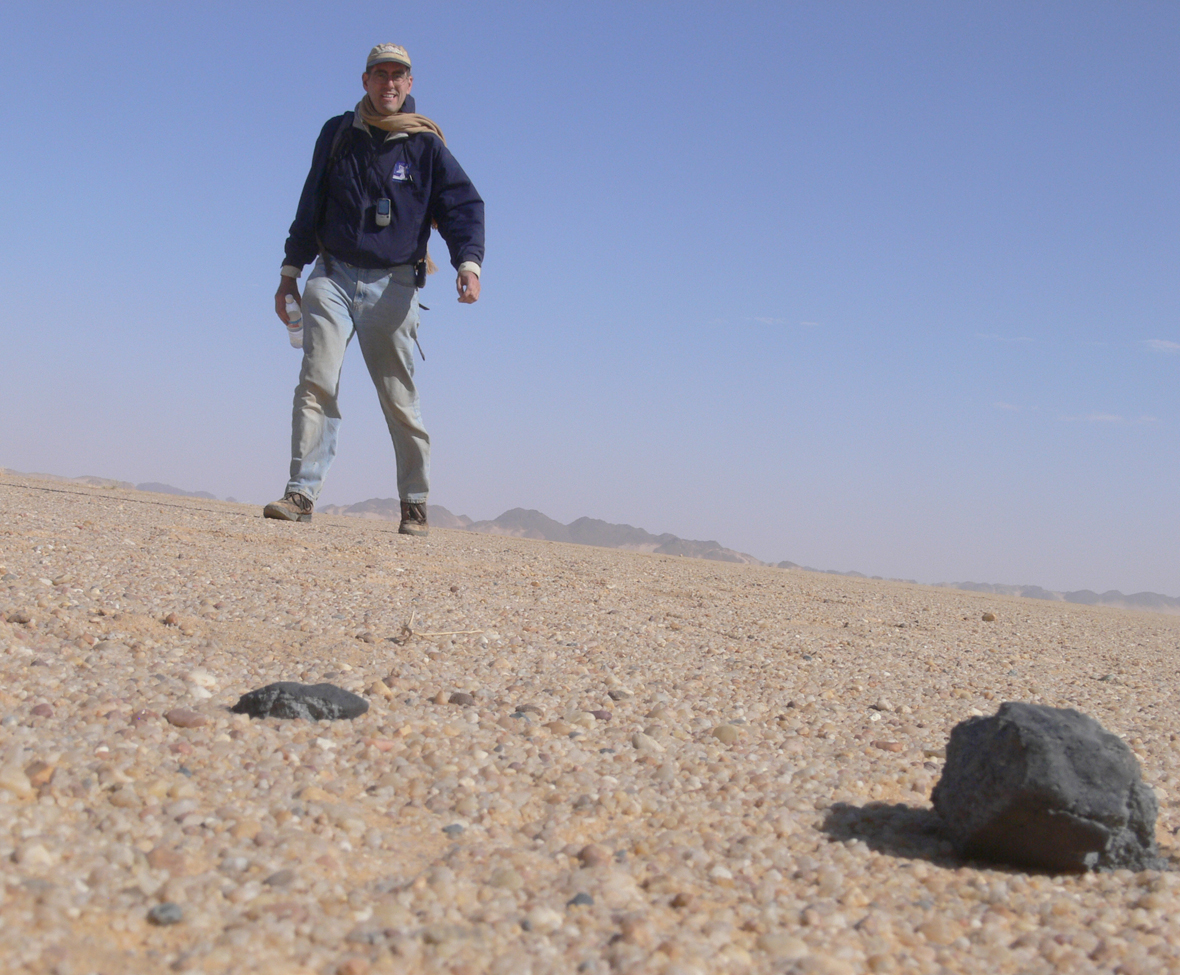
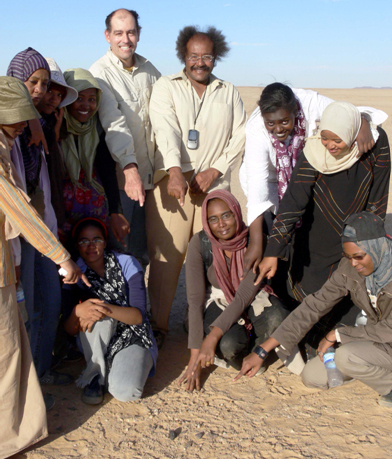 The search for meteorite fragments of 2008 TC3 in the Nubian Desert of northern Sudan. Left: A member of the search team scours the desert floor. Center: Peter Jenniskens of NASA’s SETI Institute approaches a meteorite fragment. Right: Members of the search team point to a fragment. All images courtesy Muawia Shaddad/Peter Jenniskens.
The search for meteorite fragments of 2008 TC3 in the Nubian Desert of northern Sudan. Left: A member of the search team scours the desert floor. Center: Peter Jenniskens of NASA’s SETI Institute approaches a meteorite fragment. Right: Members of the search team point to a fragment. All images courtesy Muawia Shaddad/Peter Jenniskens.
Analysis of the Almahata Sitta fragments indicates that the overall meteorite is a rare achondritic stony type known as an “ureilite,” which in general are relatively dark-colored and primitive. Tiny structures known as “nanodiamonds” which are produced by impacts and/or other shock events, have been found within the Almahatta Sitta fragments, suggesting that it came about as a result of a collision between two asteroids. Somewhat surprisingly, 19 different amino acids were detected within the fragments as well.
Kowalski also discovered the asteroid in the third such incident, 2018 LA, on June 2, 2018. It was followed for four hours before entering the atmosphere later that same day over southern Africa, and indeed several eyewitnesses on the ground reported a bright fireball over Botswana five hours after the last reported astrometric observation. Although, like the previous two objects, 2018 LA did not survive its passage through the atmosphere, it did
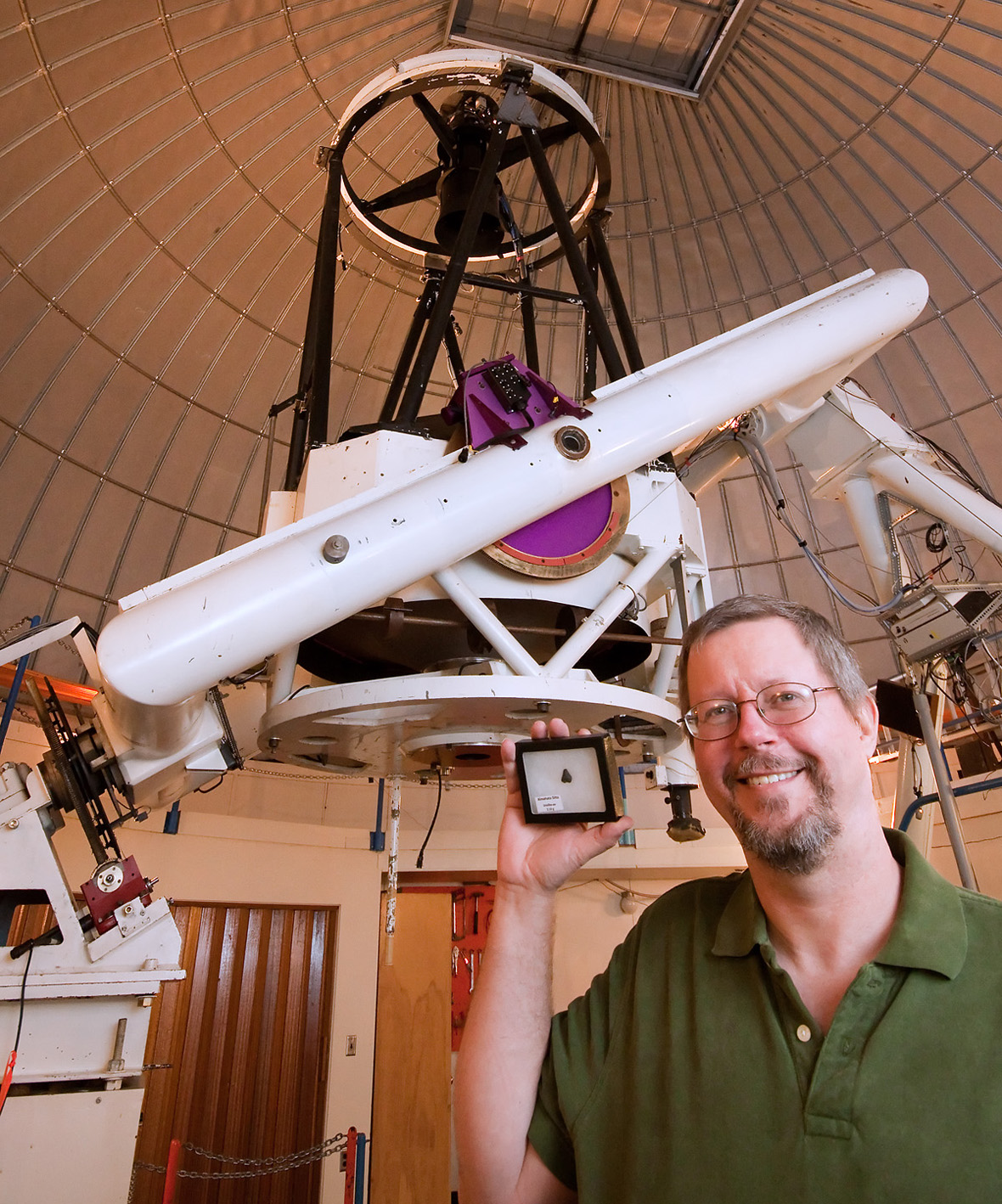
drop meteorite fragments, and a search expedition led by Alexander Proyer from the Botswana International University of Science and Technology three weeks later successfully found the first fragment in Botswana’s Central Kalahari Game Reserve. This fragment has a mass of 18 grams and although no formal analysis has been released yet, a preliminary examination suggests it may be an achondrite.
The most recent incident took place on June 22, 2019, when the ATLAS program in Hawaii discovered the tiny asteroid 2019 MO. ATLAS only followed it for half an hour, however pre-discovery observations obtained two hours earlier by one of the nearby Pan-STARRS telescopes were then identified. Eleven hours after the last ATLAS observation 2019 MO entered the atmosphere over the Caribbean Sea south of Puerto Rico, and while there does not seem to have been any ground-based eyewitnesses to the fireball, it does show up on a frame taken by NOAA’s GOES-16 geostationary weather satellite. As with the previous three entering small asteroids 2019 MO disintegrated upon atmospheric entry, but does seem to have dropped meteorites, as NOAA’s NEXRAD radar detected echoes from falling fragments. Any such fragments would now be resting on the ocean floor over four km below the surface.
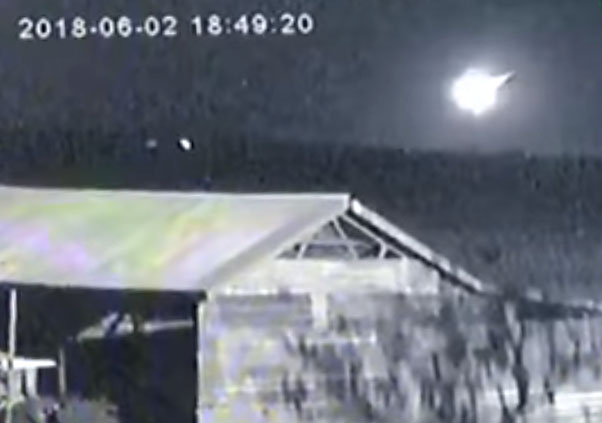
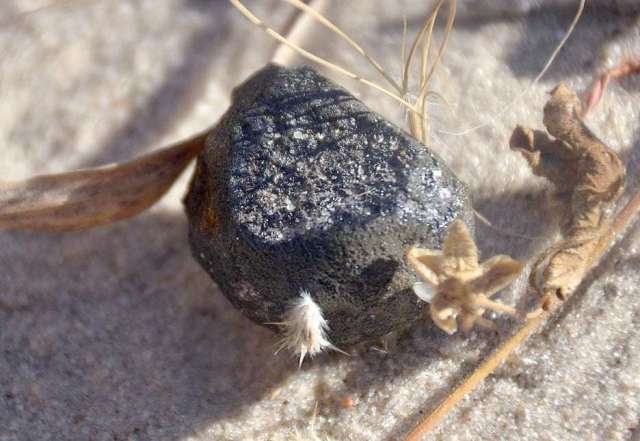
 LEFT: Frame grab from a security camera video taken by Barend Swanepoel in Botswana on June 2, 2018, showing the fireball of 2018 LA’s atmospheric entry. Center: The meteorite fragment of 2018 LA retrieved from the Central Kalahari Game Reserve in Botswana. Courtesy Peter Jenniskens. Right: Frame grab from the Geostationary Lightning Mapper aboard NOAA’s GOES-16 weather satellite, showing the fireball from the entry of 2019 MO over the Caribbean Sea on June 22, 2019. Courtesy SkySentinel/NOAA/CIRA/Colorado State University.
LEFT: Frame grab from a security camera video taken by Barend Swanepoel in Botswana on June 2, 2018, showing the fireball of 2018 LA’s atmospheric entry. Center: The meteorite fragment of 2018 LA retrieved from the Central Kalahari Game Reserve in Botswana. Courtesy Peter Jenniskens. Right: Frame grab from the Geostationary Lightning Mapper aboard NOAA’s GOES-16 weather satellite, showing the fireball from the entry of 2019 MO over the Caribbean Sea on June 22, 2019. Courtesy SkySentinel/NOAA/CIRA/Colorado State University.
The discoveries of these four objects all within the relatively recent past suggests that our capabilities of detecting incoming objects are improving, and that our procedures for predicting where and when a potential impact will occur work. While we are certainly missing quite a few of the 2008 TC3-sized objects that do enter the atmosphere, it should be remembered that these are very tiny objects that even a few lunar distances away are too dim to be detected with telescopes we now have. Fortunately, as these objects demonstrated, other than producing bright fireball displays and dropping meteorite fragments on the ground they do no pose any kind of a threat. The larger objects, like those that produced the Tunguska and Chelyabinsk events – discussed in a previous “Special Topics” presentation – do remain a threat, at least over localized areas, and in theory at least these can be detected with enough lead time to provide for evacuation procedures if necessary. However, the object that entered over Chelyabinsk – which was four or five times the size of 2008 TC3 – approached Earth from the daytime side, and such objects are, for obvious reasons, not detectable beforehand. Perhaps at some point it might be considered worthwhile to have satellite platforms interior of Earth’s orbit looking outwards for such objects – with the “whys” and the “hows” perhaps being determined by today’s “Ice and Stone 2020” participants.
“Special Topics” archive
Ice and Stone 2020 home page
Earthrise Institute home page